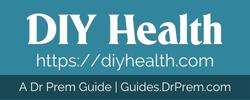In industries where precision, protection, and performance matter—such as tech development, product design, architecture, and fashion—eye protection is not just a safety requirement; it’s a productivity enhancer.
Yet, many professionals overlook one of the most crucial tools they could be using: safety glasses with prescription lenses.
Whether you’re soldering delicate circuits, laser-cutting prototypes, or working in a high-intensity fashion studio, protecting your eyes while maintaining visual clarity should never be optional.

The Eye Strain Dilemma in High-Focus Fields
Designers and engineers often work long hours in front of screens, under bright lights, or near high-speed machinery. This can lead to:
-
Dry, irritated eyes
-
Headaches caused by digital eye strain
-
Blurred vision due to uncorrected refractive errors
Prescription lenses alone can help reduce strain. However, in work environments with physical hazards—such as flying particles, chemical splashes, or sharp tools—standard eyewear isn’t enough. This is where prescription safety glasses come in.
Why Regular Glasses Fall Short in Hazardous Environments
Ordinary glasses are designed for comfort and style—not for impact resistance. If struck, they may shatter or become dislodged, putting your eyes at risk.
Prescription safety glasses, on the other hand, are made from durable materials like polycarbonate or Trivex, engineered to withstand impact and meet ANSI Z87+ safety standards. These lenses not only correct your vision but also protect your eyes.
Available features include:
-
Anti-fog coatings for clear vision in humid conditions
-
Side shields for additional protection
-
Wrap-around designs that blend seamlessly into tech and design aesthetics
Tech and Product Design: A Hidden Hazard Zone
In tech labs and prototyping facilities, eye hazards are more common than you might think. According to the Bureau of Labor Statistics, hundreds of workplace eye injuries occur daily in the U.S.—many in industries not traditionally seen as hazardous.
Whether you’re debugging hardware or working on wearable product design, your eyes may be exposed to:
-
Microscopic particles from plastics, resins, or sanding
-
UV radiation from UV-curing devices
-
Compressed air or fluids used in testing processes
Wearing proper protective eyewear is no longer optional—it’s essential.
Fashion Designers and Fabricators: Don’t Overlook Eye Protection
Sewing needles, scissors, fabric sprays, and even lighting setups can pose small but significant risks to your eyes. Pattern makers, stylists, and accessory designers frequently use adhesives or tools that create fumes or airborne particles.
For those who need vision correction, prescription safety glasses ensure creativity and safety go hand in hand.
Prescription Safety Glasses Have Evolved
Gone are the days of clunky, uncomfortable safety glasses. Today, modern, stylish, and highly functional frames provide both protection and aesthetics. From sleek wraparounds to vintage-inspired designs, there’s an option for every professional.
If you’re looking for options that merge safety, clarity, and style, RX-Safety offers one of the most extensive collections available. Browse their safety glasses prescription lineup to find frames that meet your design needs without sacrificing protection.

Final Thoughts
As tech, architecture, and design industries continue to merge aesthetics with functionality, your personal protective gear should do the same.
If you rely on your eyes for detailed, precision-based work and require prescription lenses, it’s time to upgrade to safety glasses that work as hard as you do.
Your next big idea deserves a clear, protected view.

